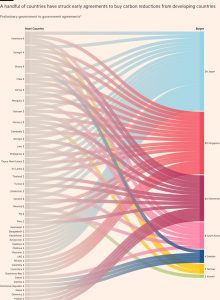The pressure points for emerging markets on inflation
Unlock the Editor’s Digest for free
Roula Khalaf, Editor of the FT, selects her favourite stories in this weekly newsletter.
The writer is a senior research fellow at Chatham House and is a former head of emerging markets economics at Citi
When global inflationary pressures started to surge in early 2021, central banks in emerging markets were, famously, the first to respond: the Brazilian, Russian and Turkish central banks raised rates in March that year, followed soon by a raft of others.
Central banks in developed countries, by contrast, moved much more slowly. It was only in March 2022 that the US Federal Reserve first increased rates, followed in July that year by the European Central Bank. One might think that emerging economies should have been rewarded with an early and decisive win in the race against inflation, having been so quick out of their starting blocks.
That is not quite how it turned out: inflation in the developed world is back to target now, leaving plenty of space for central banks in advanced economies to keep cutting rates. In August this year, the median inflation rate among the G7 economies fell below their 2 per cent inflation target for the first time since mid-2021.
Emerging economies, on average, are having a tougher time of it. Looking at a group of 16 major developing countries (excluding China), the median inflation rate is still 3.6 per cent, about 0.6 percentage points higher than their median inflation target of 3 per cent.
Of course, there are some countries — South Africa, for example, or Hungary — that have successfully brought inflation rates back to their target level. But many have not. So how did the G7 tortoises beat the emerging markets hares?
One important reason lies in a particular dynamic of emerging markets: when the US is dealing with its own inflation problems, that makes it more difficult for emerging economies to deal with theirs. This is because tighter US monetary policy tends to suck capital away from emerging economies, and the consequent weakening of their currencies makes it tougher for central banks to rein in inflation. Indeed, the past few years have been a miserable time for emerging market currencies: broadly speaking the dollar is, in nominal terms, more than 10 per cent stronger than it was in the middle of 2021.
Not all this has to do with US monetary tightening but that paradox should offer some hope to central banks in emerging markets now. Since the Fed is in rate-cutting mode, the door should be more open than in the past to dollar depreciation, and that overall loosening of US monetary conditions ought to help push capital back towards emerging economies, helping their currencies strengthen and their inflation rates to come further under control.
Another disinflationary force should come from China. Notwithstanding the recent tilt towards economic stimulus, it is worth assuming that export growth will continue to feature strongly in Beijing’s economic strategy.
Cheap Chinese imports are increasingly evident everywhere. While the growth rate of global import volumes is close to zero, the growth rate of Chinese export volumes is about 10 per cent, according to the Dutch research institute CPB. China’s capture of global market share is proceeding apace. And that is particularly true for developing countries. 2023 was the first year in which more than half of China’s trade surplus came from other developing countries. Although this surplus can be a source of irritation to many emerging economies — reflected in their increasing willingness to impose trade restrictions against China — there should be a disinflationary upside to all this.
But against all this, Brazil, which has resumed monetary tightening, offers a cautionary tale. Thanks to loose fiscal policy, the economy is being goosed in a way that is sustaining a very strong labour market and very high services inflation.
In Turkey too, fiscal policy is still too loose and the central bank’s anti-inflation strategy is way too dependent on keeping the exchange rate stable. That helps to push down the inflation rate of traded core goods, 28 per cent at present, but not non-traded services, where the inflation rate is still more than 73 per cent. And since there are other countries where fiscal policy discipline may become increasingly questionable — Mexico, Poland, Indonesia, Hungary or Thailand, for example — central banks will need to be mindful of the risk that loose budgets create unwelcome inflationary pressures.
Overall, there is neither need for anxiety nor room for complacency in emerging economies’ efforts to bring inflation down to targeted, or reasonable, levels. But if there is one thing that is likely to make the hares lose even more momentum, it is likely to be fiscal indiscipline.
#pressure #points #emerging #markets #inflation




